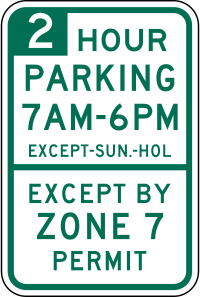 A major problem experienced by transportation planners wherever space is limited is parking. As transportation becomes easier and more and more people use their vehicles to get around, there has to be space to store these vehicles when not in use. The typical solution is to build a parking lot, however when space is limited this is rarely efficiency enough. A better choice is a conventional parking garage; however their efficiency is limited by the space that needs to be left for cars to make their way in and out. The solution to this issue has been the creation of automated parking systems (APS).
A major problem experienced by transportation planners wherever space is limited is parking. As transportation becomes easier and more and more people use their vehicles to get around, there has to be space to store these vehicles when not in use. The typical solution is to build a parking lot, however when space is limited this is rarely efficiency enough. A better choice is a conventional parking garage; however their efficiency is limited by the space that needs to be left for cars to make their way in and out. The solution to this issue has been the creation of automated parking systems (APS).
History
Automated parking was first constructed in 1905 in France, however the technology did not see significant usage until the 1970’s. These early systems were prone to mechanical failure and usually increased the amount of time required for drivers to park and retrieve their car. Japanese builders constructed some of the first and most successful systems during that time, as they worked to make the most of the small land area they had available. Interest in the US was limited until late in the 1990’s when the technology had developed enough to lower the likelihood of mechanical errors. In addition to being more space-efficient, these new systems also had a number of other benefits such as keeping the parked vehicles more secure, and protecting them from damage from careless drivers. One example of a modern automated parking system can be seen in Philadelphia, where designers have created an extremely efficient system to serve their parking needs.
While the concept still feels bizarre to me, I am sure that parking systems such as this will see more and more usage as development continues and land becomes more and more valuable, especially in congested cities such as New York.
Sources:
- http://en.wikipedia.org/wiki/Automated_Parking_System
Images:
- http://en.wikipedia.org/wiki/File:SDOT_R7-108P.svg

I like how these systems can be as apparent as a normal parking garage or as inconspicuous as a single-car garage. To the driver, the parking facility can be as little as a single module that they pull into, turn off their engine, and walk away leaving the automated system to take car of their car. Then, when returning to their car, it reappears usually facing the opposite direction to allow the driver to simply get in their car and drive right out onto the street. It saves both time and space and removes unsightly parking garages from a city’s landscape. What surprised me the most is that they can even be cheaper to build. They require less excavation generally and less land. They also cost less to operate, save on insurance for the garage owner, and do not need as much ventilation. Now that I am thinking about it, I wonder why there are not more of these around.